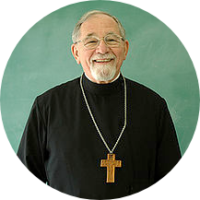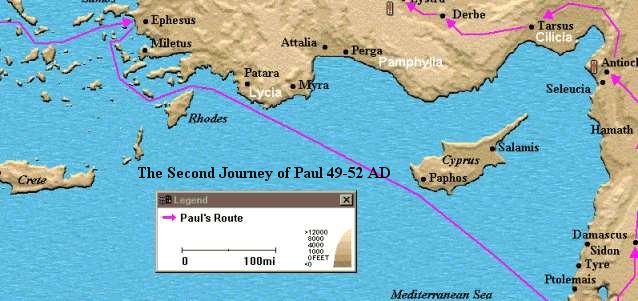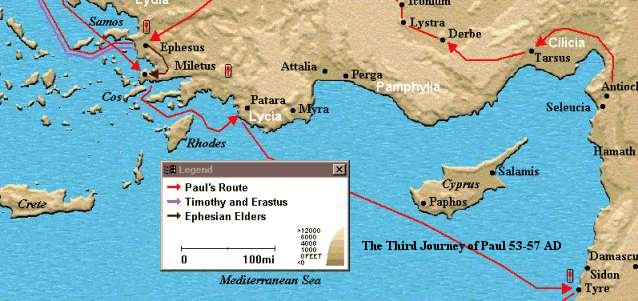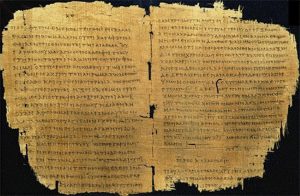Saint Paul, Apostle to the Gentiles
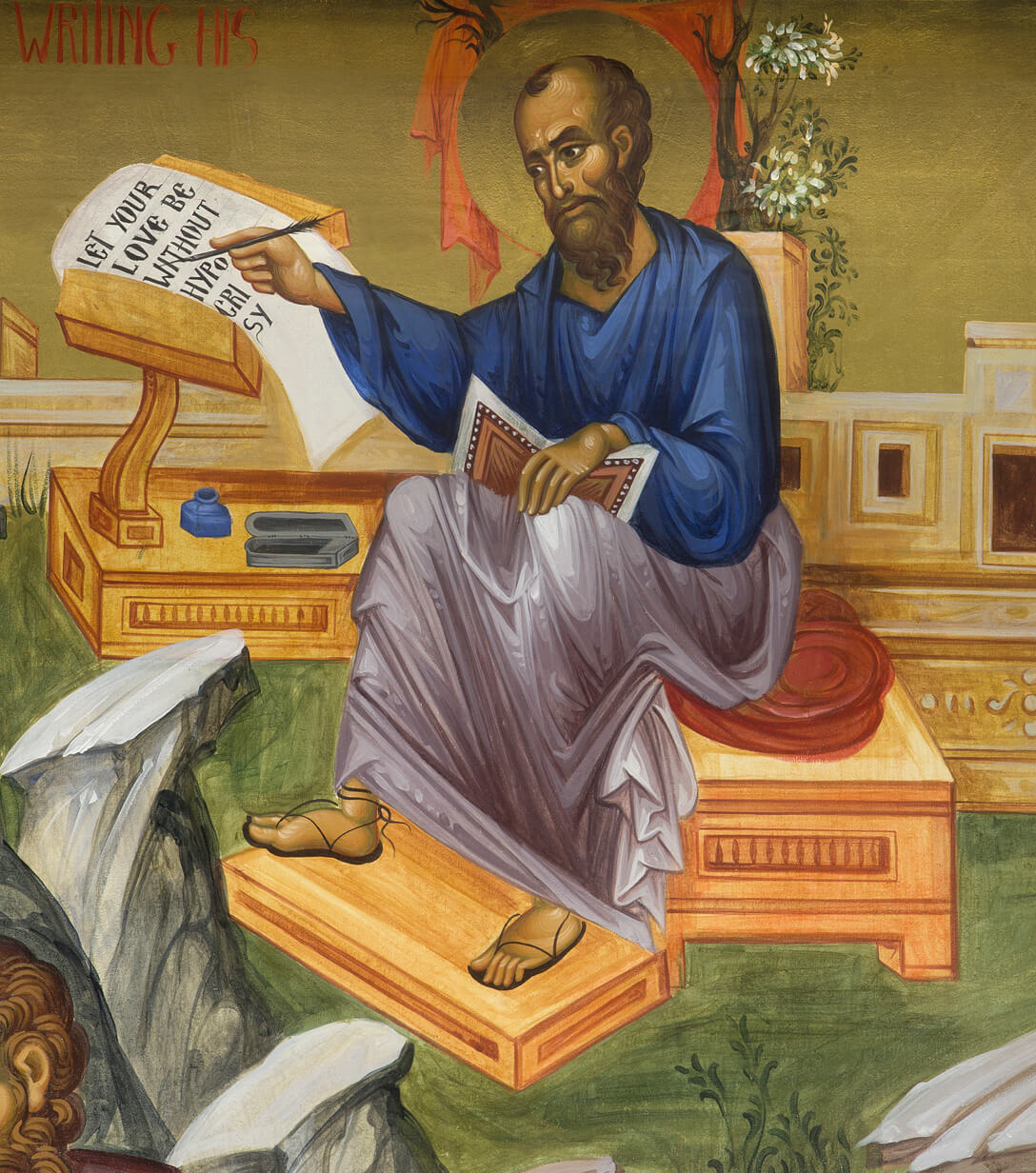
St. Paul’s significance in the history of Christianity can hardly be underestimated: an indefatigable missionary, the first interpreter of the Good News of Jesus Christ to the Gentile world, he is also the author of more New Testament books than any other writer.
Background
When we first meet him in the Book of Acts (7:58-8:1) it is as Saul; and later, Acts 13:9 describes him as “Saul, who is also called Paul.” As a Jew he bore the name of Israel’s first king (1 Samuel 9:2, 17); but as a free citizen of the Empire, he also bore a Roman name. Many Jews of this period in history had two names, one Semitic and the other Greek or Roman. A child of the tribe of Benjamin (Romans 11:1; Philippians 3:5; 2 Corinthians 11:22), Paul proudly identified himself as an “Israelite” and a “Hebrew born of Hebrews, as to the law a Pharisee” (Philippians 3:5) “extremely zealous for the traditions of my fathers” who excelled his peers “in Judaism” (Galatians 1:14). But he was also proud to be “a Jew from Tarsus in Cilicia, a citizen of no mean city” (Acts 21:39). Tarsus was a Hellenized city, famous for its university, gymnasium, theatre, art school and gymnasium. It became the capital of the province of Cilicia during Pompey’s reorganization of Roman Asia Minor in 66 BC. Later on, Mark Antony – famous as Cleopatra’s lover – granted freedom and Roman citizenship to the people of Tarsus. In an age when most of the people living within the boundaries of the Pax Romana were slaves, Paul was born a free citizen of the Empire.
St. Paul was “educated strictly according to the law of our fathers” at the rabbinical school conducted in Jerusalem by the great rabbi Gamaliel (Acts 22:3). Gamaliel was a Pharisee and a member of the Sanhedrin, “a teacher of the law respected by all the people” (Acts 5:34). Although Gamaliel is depicted in the New Testament as lenient towards Christians (Acts 5:33-39), his disciple Saul was active in the earliest persecutions of Christianity and attended the stoning of St. Stephen the deacon and first Christian martyr (Acts 7:58). Paul “persecuted this Way to the death, binding and delivering to prison both men and women” (Acts 22:4).
The Life of St. Paul
Conversion
Intent on exterminating the new faith, Paul sought to travel to Damascus to undertake the persecution of Christians there. It was during his trip from Jerusalem to Damascus in Syria that his life would take a crucial turn when he encountered the risen Jesus in a searing vision of light that left him temporarily blind. This experience was revolutionary, engendering a complete transformation and redirection of his life. As a result of this “revelation” (Galatians 1:12), Saul, the bloodthirsty persecutor of Christianity converted to the faith he once hated, was baptized by Ananias and received into the Church of Damascus, the very community he had set out to suppress (Acts 9:10-31). From this moment on, he became a “slave of Jesus Christ” (Romans 1:1) and in that slavery discovered “the glorious freedom of the children of God” (Romans 8:21).
Luke recounts this Damascus experience three times in the Book of Acts: once in the narrative, Acts 9:3-19; and twice, in speeches, before a crowd in Jerusalem (22:6-16) and before Festus and King Agrippa (26:12-18).
“Saul, still breathing threats and murder against the disciples of the Lord, went to the high priest and asked him for letters to the synagogues of Damascus, so that if he found any that belonged to the Way, men or women, he might bring them bound to Jerusalem.” “While I was on my way and approaching Damascus, about noon, I saw a great light from heaven, brighter than the sun, that suddenly shone around me and my companions. When we had all fallen to the ground, I heard a voice saying to me in the Hebrew language, ‘Saul, Saul, why do you persecute me?’ I answered, asking, ‘Who are you, Lord?’ The Lord answered, ‘I am Jesus whom you are persecuting. But get up and stand on your feet! I have appeared to you for this purpose: to appoint you to serve and testify to the things you have seen. I will rescue you from your people and the Gentiles – to whom I am sending you, to open their eyes so that they may turn from darkness to light and from the power of Satan to God, so that they may receive forgiveness of their sins and a place among those who are being made holy by faith in Me.”
This vision of the glory of God – what later theologians and saints will call the uncreated light – is the call by which Paul becomes the Apostle to the Gentiles, the greatest missionary in the history of Christianity. It is through his missionary efforts that Christianity, originally a sect of Judaism, becomes a world religion.
Preaching, Missionary Journeys and the Apostolic Council in Jerusalem
After his encounter with the risen Lord on the road to Damascus and baptism at the hands of Ananias, Paul tells us in his letter to the Galatians that he “went away at once into Arabia,” spending time in the desert wastes before returning to Damascus, where he remained for three years (1:17-18). By the time of his return to Damascus, the essentials of his teaching were crystal clear: God’s promise to Abraham has been fulfilled in the resurrection of Jesus. The risen Jesus is the climax of history for He is both the Messiah, the Christ, and “the power and wisdom of God” (1 Corinthians 1:24). Teaching in the synagogues in Damascus that Jesus “is the Son of God,” his preaching proved so controversial that there were plots to kill him. He escaped Damascus by being lowered over the city walls in a basket at night (Acts 9:19-25).
Three years after his conversion, Paul journeyed to Jerusalem to meet with Peter and stayed with him for fifteen days. “But I did not see any other apostle except James, the Lord’s brother” (Galatians 1:18-19). In Acts 9:26-30 Luke describes the suspicion with which the leaders of the Church in Jerusalem greeted Paul and that it was Barnabas who secured Paul’s acceptance. From Jerusalem, Paul returned to Syria and ultimately went to its capital, Antioch, the third city in the empire after Rome itself and Alexandria in Egypt.
It had been in Antioch of Syria that followers of the Way had first been called Christians (Acts 11:26) and it was this community that would commission Paul and Barnabas as missionaries (Acts 13:1-3).
Luke organizes Paul’s missionary activity into three segments or journeys. Paul’s missionary journeys cover roughly 46-58AD, the most active years of his life, as he evangelized Greece and Asia Minor. Paul’s first missionary journey is recounted by Luke in Acts 13:3-14:28 and lasted for three years, probably from 46 to 49AD.
However, Paul’s message created controversy wherever he went. Initially preaching and teaching in the synagogues of the various cities they visited, it was in Antioch of Pisidia that the conflict led Paul and Barnabas to declare that they were now “turning to the Gentiles” (Acts 13:46). This decision, to preach not only to the Jews but to all peoples, marks a decisive turning point in the history of Christianity. From that moment on the message of Jesus, the crucified yet risen Messiah, was clearly open to everyone and this was understood by Paul and Barnabas to be the fulfillment of the Old Testament scriptures (Acts 13:47-48). God had “opened the door of faith for the Gentiles” (Acts 14:27).
But it was in Antioch of Pisidia that Paul and Barnabas soon found themselves in conflict with other teachers in the Church, “believers who belonged to the sect of the Pharisees” (Acts 15:5), men “from Judea” who were teaching that “unless you are circumcised according to the custom of Moses, you cannot be saved” (Acts 15:1). When this leads to “no small dissension and debate, Paul, Barnabas and some of the others were appointed to go up to Jerusalem” to consult “the apostles and presbyters” about the status of Gentile converts and whether or not it was necessary for them to conform to the Mosaic covenant (Acts 15:1-5). This visit leads to the council of Jerusalem (circa 49-50AD). This council was to be a paradigmatic event in the life of the Church, the pattern for ecumenical councils yet to be called in the centuries to come. At this council there was “much debate” as Paul and Barnabas presented their Gospel before the assembled community, which included “James, Peter and John” who were “acknowledged” as “leaders” and “pillars” of the Church (Galatians 2:1-10). According to Acts 15:6-21, it was Peter’s voice that carried the day in favor of Paul and Barnabas. But it was James, speaking on behalf of all, who announced the decision of the council: circumcision is not obligatory for salvation.
After the council of Jerusalem, Paul and Barnabas go their separate ways: Barnabas taking John Mark and sailing to Cyprus, Paul choosing Silas and traveling throughout Syria and Cilicia “strengthening the churches” (Acts 15:36-41).
In the decade to come, Paul was to embark on two more missionary journeys, the second one from 50 to 53AD and the third and final missionary journey lasting six years, from 53 to 59 AD. During these journeys Paul would travel throughout the ancient Mediterranean world, preaching and teaching, establishing new churches everywhere he went. His Letters leave a trail of churches founded and/or nurtured by him: Ephesus, Corinth, Thessaloniki, Philippi. He preached in Athens and was to die in Rome, the intellectual and political centers of the Empire.
To view maps of St. Paul’s missionary journeys throughout the ancient Mediterranean world, click below:
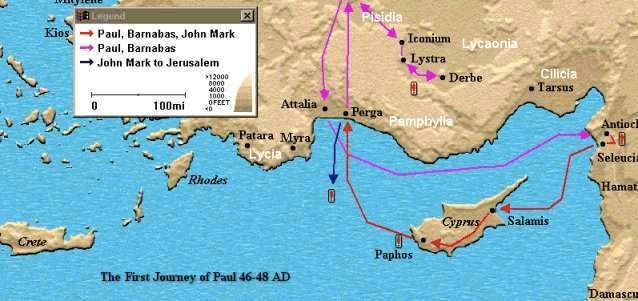
St. Paul’s First Missionary Journey
St. Paul’s Letters
Paul’s letters are the oldest Christian documents that we have. Most modern scholars believe that Paul’s First Letter to the Thessalonians is the first book of the New Testament to be written, sometime in 52AD. His letters are also the largest collection of writings by any one person in the New Testament. In modern Bibles, they are placed in order of their length, with the longest letter, that to the Romans, being first and then followed by letters to individuals (Timothy, Titus and Philemon) last. Paul’s letters are exactly that: letters, occasional writings meant to deal with specific issues in the churches to which he addressed them. They are not systematic theological treatises in the modern sense. And yet, they have provided rich and deep theological insights that have never been surpassed in the Church’s history.
Imprisonment and Final Years
It is during his last visit to Jerusalem “to visit James” (Acts 21:18) that Paul is arrested near the Temple after a small riot and taken by a Roman tribune before the Sanhedrin, the Jewish council. Paul defends himself before the Sanhedrin by playing on the dissension between the Pharisees and Sadducees and their conflict over the resurrection. After a plot to assassinate Paul is discovered, Paul’s case is transferred to Antonius Felix, the procurator of Judea, who keeps him in prison for two years, expecting a bribe. When Felix’s successor, Festus, arrives on the scene, Paul appeals his case to Caesar, requesting a trial in Rome by virtue of his Roman citizenship. “You have appealed to the emperor; to the emperor you will go,” Festus replied (Acts 25:12). Paul’s journey to Rome was to be an eventful one that included shipwreck. The Book of Acts closes with Paul under house arrest in Rome still carrying out his ministry of teaching and preaching – faithful to his Master to the end.
During his thirty-year ministry as an apostle what had Paul suffered for the sake of the Gospel? Already in 2 Corinthians, Paul describes some of what he endured to preach the Good News of Jesus risen from the dead: “Five times I have received from the Jews the forty lashes minus one. Three times I was beaten with rods. Once I received a stoning. Three times I was shipwrecked. For a night and a day I was adrift at sea. On frequent journeys, I was in danger from rivers, from bandits, from my own people, from Gentiles, in danger in the city, in danger in the wilderness, in danger at sea, in danger from false brethren; in toil and hardship, through many a sleepless night, hungry and thirsty, often without food, cold and naked. And, besides other things, I am under daily pressure because of my anxiety for all the churches” (11:24-29).
Eusebius, the 4th century bishop of Caesarea who is often called the first Church historian, records that the apostle Paul was executed in Rome during the persecution of the emperor and madman, Nero. Nero’s persecution of Christians lasted for four years, from 64 to 68AD. It was also during this persecution that the apostle Peter was executed. As a Roman citizen entitled to a quick death, Paul was beheaded. St. Gregory the Great, the 6th century pope, wrote that Paul’s execution took place on the left bank of the Tiber River on the Via Ostiensis, the road to the port of Ostia, and is buried under the main altar of the basilica of St. Paul Outside the Walls.
The Hymn of St. Paul
Facing danger at sea and fearful persecution, you became a chosen vessel of the Savior. By your sermons you enlightened the nations and to the Athenians you revealed the unknown God. Teacher of the nations, St. Paul the Apostle, protector of us all, keep us who honor you safe from every trial and danger.
Celebrating the Year of Saint Paul
June 29, 2008 – June 29, 2009
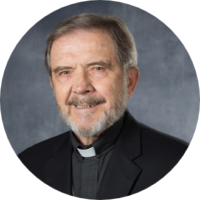
Lectures on St. Paul
from Father Theodore Stylianopoulos